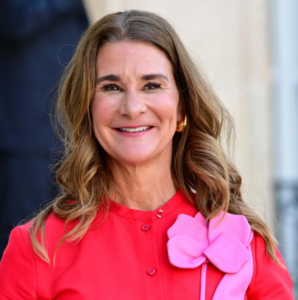Melinda French Gates: Women Need Safety Nets For The Childcare Cliff
Originally published by Maggie McGrath for Forbes
The way Melinda French Gates looks at it, the state of female power in 2023 was a matter of sliding doors. “If you slide one door, and you look through it, you can see a lot of progress for women,” says the billionaire philanthropist, citing victories in the continuing battle for reproductive choice and Nobel Prizes awarded to women. “And then if you slide another door, you say, ‘Wow, there’s still so many difficulties for women.’”
Among the most pressing is the lack of childcare help. So many women in the U.S. and around the world have such little structural support in caring for their families that they’re often forced to devote their time and money to work that doesn’t pay at the expense of work that does.
“We still expect women to do the unpaid labor that our societies are built on the backs of, and our economies are built on the backs of,” French Gates, No. 10 on this year’s list of the World’s Most Powerful Women, told Forbes in an exclusive conversation. “We have got to solve the caregiving-problems crisis around the world.”
That problem-solving needs to start at home, and it needs to start fast. At the end of September, $24 billion of federal childcare funding that had been a part of the 2021 American Rescue Plan Act pandemic-relief package expired — the so-called childcare cliff. It leaves 70,000 childcare facilities in the U.S. at risk of closing. More than three million children could lose their spots in daycare and the parents who cut back on their working hours or leave the workforce to fill the gap stand to lose a collective $9 billion in earnings, according to research from the Century Foundation.
While French Gates’ goal is to spread women’s economic self-determination, it’s also true that entire societies are transformed by female participation. And entire economies can suffer when women are forced to leave. The loss in tax and business revenue from the childcare cliff will likely cost states $10.6 billion in annual economic activity, the Century Foundation says.
This year, the U.S. saw its highest female labor-force participation rate since before the pandemic. The number of women between the ages of 25 and 54 who are employed set a record that goes back to 1948, when comprehensive state data were first collected, according to a Wells Fargo analysis. But KPMG chief economist Diane Swonk warns that these gains could be reversed.
“A year from now, Covid-era subsidies for low-income childcare are going to expire, as well,” Swonk told Forbes. “And all those things are going to erode the ability of some women to participate [in the economy] at the same time that they have less say over when and how and if they have children. That’s a very hard reality.”
